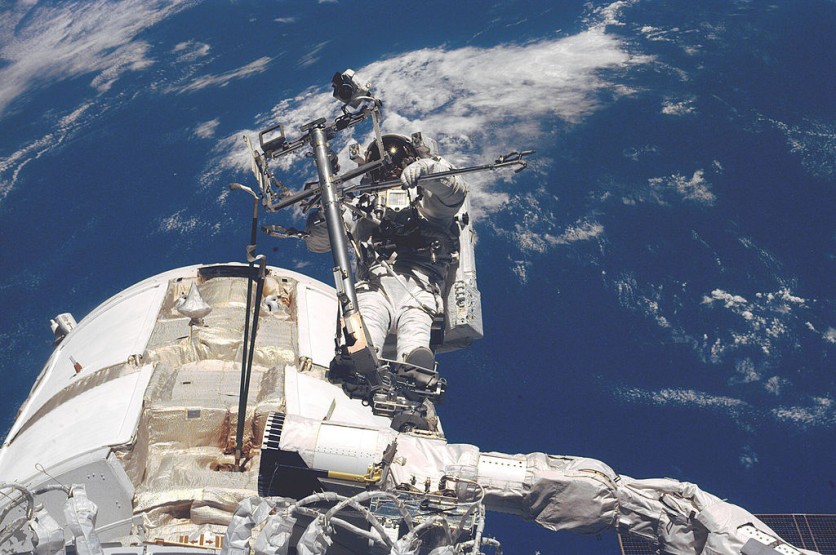NASA has given the green light to restart routine spacewalks outside of the International Space Station (ISS) after finishing a flight readiness review in October.
The first of the three anticipated spacewalks is slated to start in the middle of November to continue the installation and roll-out of the iROSA solar arrays.

Why NASA Halted Spacewalks
After European Space Agency (ESA) astronaut Matthias Maurer discovered a higher-than-normal buildup of water inside his helmet following a nearly seven-hour expedition on Mar. 23, NASA discontinued routine spacewalks.
Mauer was performing a spacewalk at that time to prepare to build a new solar array outside the microgravity laboratory.
The investigation into the situation is now complete, and it was determined that hardware problems brought on no leak. According to NASA authorities, the water was just condensation brought on by Maurer's extravehicular mobility unit (EMU) spacesuit's cooling mode and the high levels of astronaut exertion.
After the successful spacewalk, the space station crew hurriedly removed Maurer's helmet before working with the ground support staff at NASA's Johnson Space Center in Houston to collect data.
The organization classified the incident as a close call and promptly halted all upcoming U.S. Operating Segment spacewalks while the cause was being looked into.
In addition to returning the spacesuit as part of the agency's SpaceX CRS-25 mission, NASA returned to Earth water samples and other suit hardware with Soyuz 65S and its Crew-3 mission.
To find out what caused the water to go into the helmet, the space station team thoroughly tested, disassembled, and assessed the water samples and suit components throughout the investigation.
Good Working Order
The crew verified that the suit's hardware was in good working order. Several factors, including crew effort and crew cooling settings, contributed to the formation of comparatively larger volumes of condensation within the system, which was most likely the root source of the water within the helmet, according to NASA.
Based on the results, the team revised operational processes and created new water mitigation hardware to reduce the likelihood that scenarios involving integrated performance result in water accumulation while also soaking up any water that does show up.
NASA said that these precautions would help keep any liquid within the helmet contained and the crew safe.
According to Kathryn Lueders, associate administrator for NASA's Space Operations Mission Directorate, crew safety is the primary priority for both the agency and its international partners.
"I'm proud of the space station and ground teams' work to keep our crew members safe, for taking the time necessary to close out the investigation, and for continually findings ways to mitigate risks in human spaceflight."
Related Article : NASA's Earth Observatory Discovers a New Baby Island After an Underwater Volcanic Eruption
This article is owned by Tech Times
Written by Joaquin Victor Tacla
ⓒ 2025 TECHTIMES.com All rights reserved. Do not reproduce without permission.




